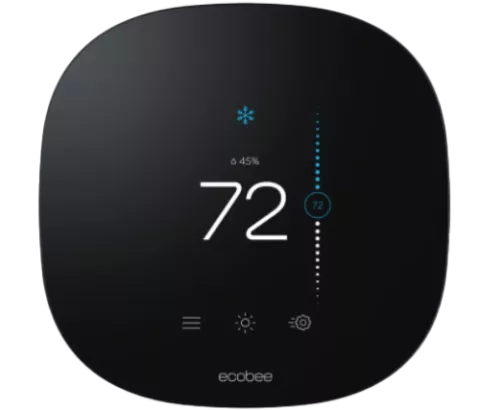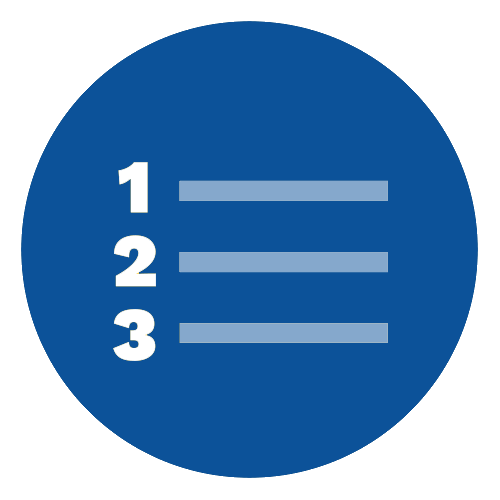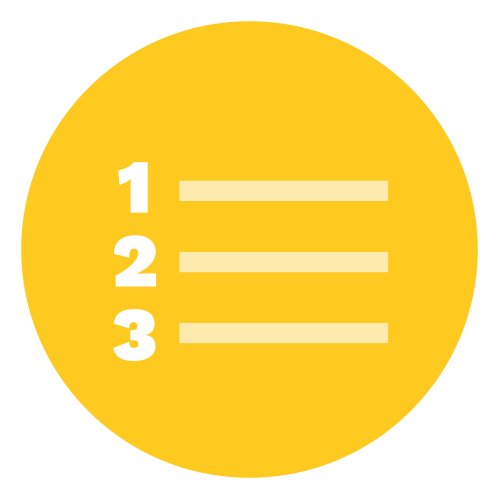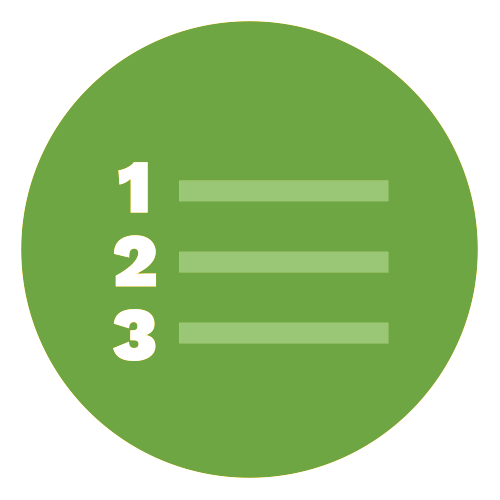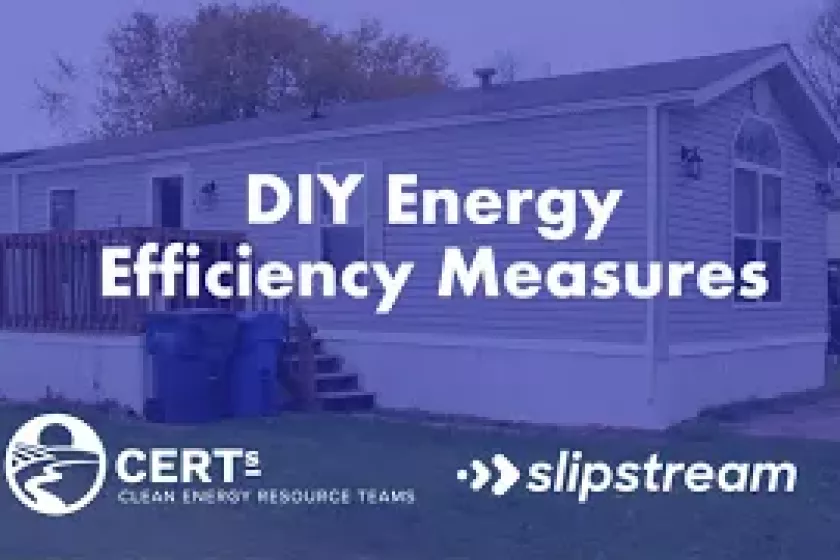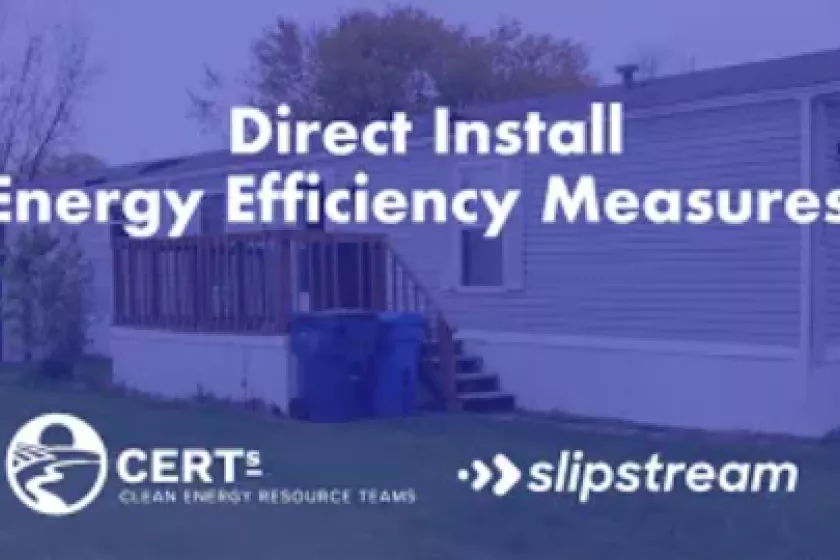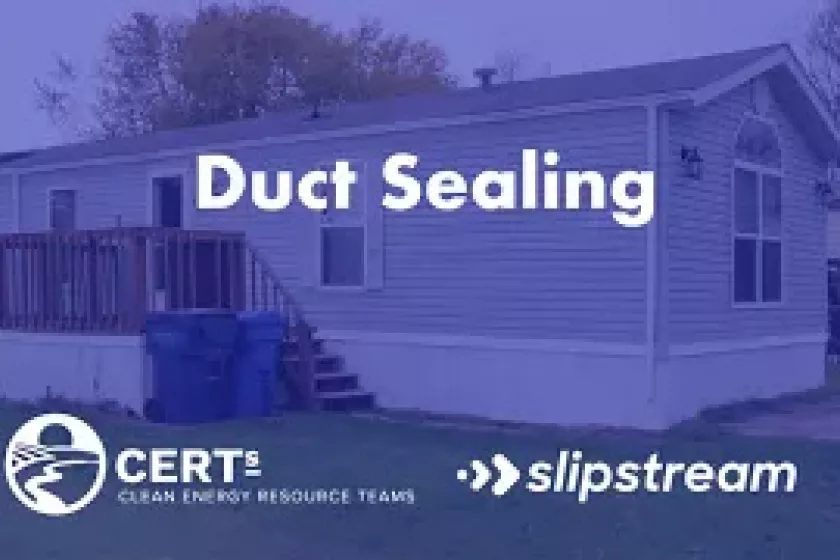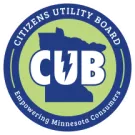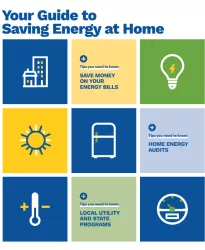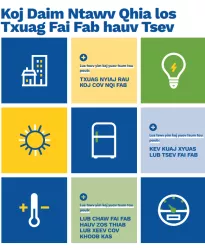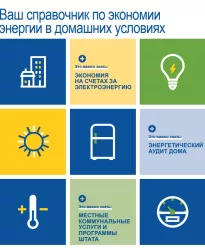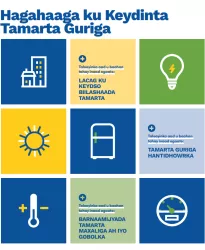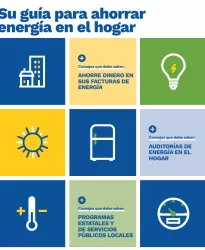Saving Energy at Home
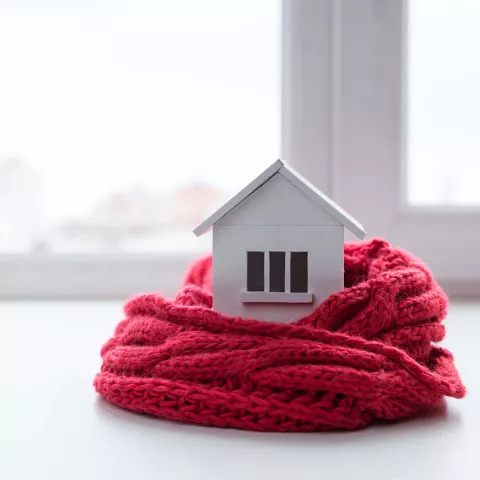 BE EFFICIENTLY COMFORTABLE
BE EFFICIENTLY COMFORTABLE
Don’t heat or cool the outdoors:
- Close windows and doors when running the furnace or air conditioner.
- Inspect doors and windows for gaps or cracks, and seal with weatherstripping, caulking, or foam insulation.
- Use plastic film on windows and draft snakes, sweeps, and weatherstripping for doors to seal your home from cold drafts.
- Adding insulation and sealing air leaks can reduce heating and cooling costs by 15% or more.
If you have air registers, make sure they are clear of furniture or other obstructions so that air can circulate.
Cold Weather Tips
- Set your thermostat at 68°F during the day, and lower it at night or when you are away.
- Open curtains, blinds, and shades during the day to let the sun help to warm your home, and close them at night.
Warm Weather Tips
- Set your thermostat at 78°F and use a simple box fan when you're in the room to reduce air conditioning costs.
- Close curtains, blinds, and shades during the day and open windows at night to take advantage of free, cool, evening air.
Install a programmable or smart thermostat
A smart thermostat can be programmed to cool or heat spaces in advance rather than maintaining a constant temperature.
A free programmable thermostat is often included for free when you have a home energy audit. Or you can check with your local utility to see if they offer rebates or free thermostats.
Maintenance
Get your heating system tuned up annually and replace furnace filters monthly.
Emergencies
If your furnace stops working and you can't afford repairs, contact the Energy Assistance Program (EAP), usually your local Community Action Agency.
Energy Saving with Weatherization
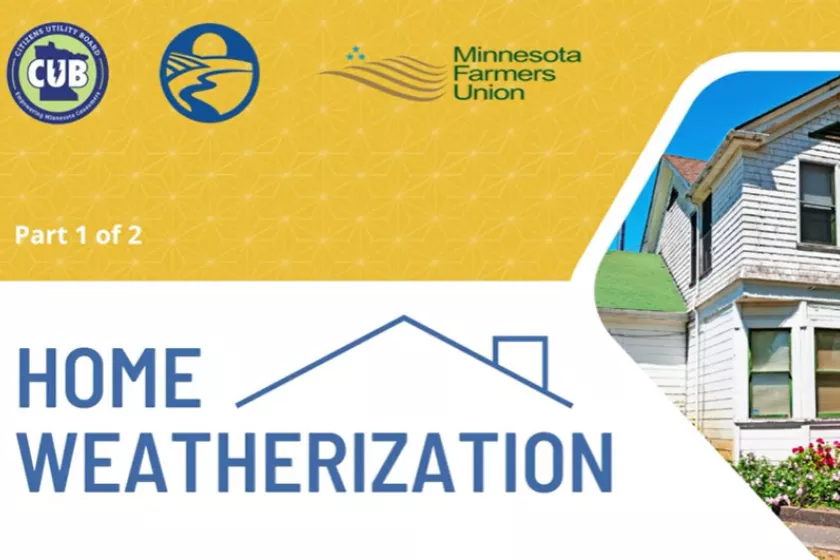
Part 1: Home Weatherization
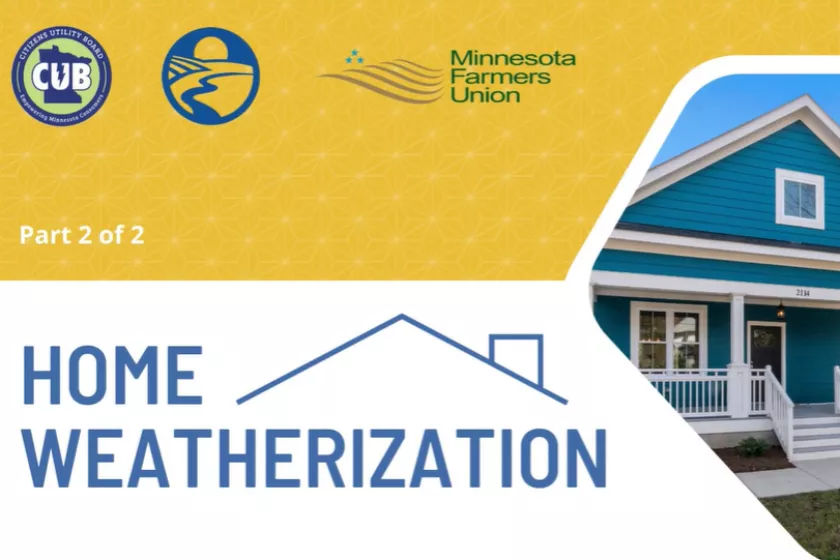
Part 2: Home Weatherization
What is weatherization?
Learn more about weatherization upgrades and programs that can pay for them.
TIPS FOR YOUR HOME
Information specifically for renters, residents of manufactured homes, single-family home buyers, and landlords provide ways to be comfortable, safe, and efficient.
Know before you buy
Inspect the Home
Assume that the home is being sold “as is.” Get it inspected by a professional who is a member of ASHI or InterNACHI. It can be a good idea to request previous utility bills to estimate heating and cooling costs in the home, as high bills could indicate that energy improvements need to be made.
Before buying a home, there are four areas you should inspect, with the highest opportunity for energy savings in Minnesota’s climate:
- Attic Insulation: Air leaks allow air from inside a house to enter the attic, potentially causing comfort issues, ice dams, and moisture issues. Sealing these leaks and adding insulation will improve a home’s durability and save energy.
- Heating System: Forced air furnaces typically have a 20 year life, and boilers should be replaced after 25 years.
- Wall Insulation: Walls with little insulation are cold and drafty. Dense packing walls with insulation reduces home drafts and improves home comfort. This will also reduce energy waste and save money.
- Windows: Windows should be double-pane, or single-pane with storm windows. Storm windows can be installed on the exterior of single-pane windows to cost effectively reduce energy usage, reduce drafts, and improve comfort.
Know before you rent
Ask to see recent utility bills so you know how much they might cost.
What utilities does the house or apartment have?
If there is more than one unit in the building, are there individual energy meters for each unit or is there one shared meter? Electric, natural gas, delivered fuels (propane or fuel oil), other?
Who pays the utilities: renter or landlord?
Your landlord can be your partner
Talk with your landlord about energy:
- Ask if there’s been an energy assessment or audit recently.
- Ask for help installing a programmable thermostat.
- Find out whose responsibility it is to change the furnace filter monthly and get the furnace serviced regularly.
- If appliances are old or need replacement, request ENERGY STAR appliances that qualify for utility rebates.
- Ask for help installing water-efficient faucet aerators and showerheads to reduce water heating costs.
- Find out how to turn down the water heater to 120°F to reduce energy use and prevent burns.
If your heat stops working
Contact your landlord.
MN law requires that landlords maintain rental properties so that they are “fit to live in” and “kept in reasonable repair.”
If your utilities are shut off or you are behind on payments
If your landlord pays your utilities:
Contact your landlord to alert them that utilities need to be paid. LawHelpMN.org offers additional suggestions.
If you pay your own utilities:
Minnesota’s Cold Weather Rule (CWR) is a state law that protects you from having your electric or natural gas service shut off between October 1 and April 30. If you are behind in paying your electric or natural gas bill, contact your utility company to find out if you qualify for CWR protection, and to sign up.
Renter 101
This FREE online class provides information on the rental process and related skills
Landlords and Tenants: Rights and responsibilities
Under "Housing & Utilities" and "Spanish"
This useful document from the MN Attorney General provides details on legal rights and responsibilities relating to housing rentals.
HOME Line
This nonprofit Minnesota tenant advocacy organization provides free and low-cost legal, organizing, education, and advocacy services so that tenants throughout Minnesota can solve their own rental housing problems.
Minnesota Housing
MN Housing is the state’s housing finance agency. If you need help finding or paying for rental housing, check out the resources on their website.
Know Before You Buy
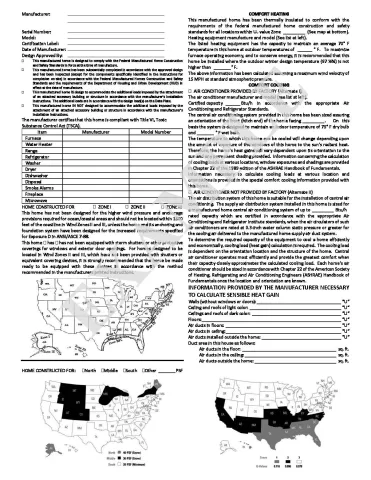 The Data Plate is a sheet of paper located in a kitchen cabinet, an electrical panel, or a bedroom closet. It should never be removed! If it is missing, you may not be able to find out whether the home was designed for Minnesota’s cold climate. A missing data plate may also mean that the home was manufactured prior to 1976, when efficiency standards were implemented for manufactured homes. There are several pieces of information on the data plate that are particularly important:
The Data Plate is a sheet of paper located in a kitchen cabinet, an electrical panel, or a bedroom closet. It should never be removed! If it is missing, you may not be able to find out whether the home was designed for Minnesota’s cold climate. A missing data plate may also mean that the home was manufactured prior to 1976, when efficiency standards were implemented for manufactured homes. There are several pieces of information on the data plate that are particularly important:
- When was the home manufactured?
- Some homes were designed only for temporary housing. Make sure the data plate does not include a warning against long-term habitation.
- What is the factory-installed equipment? If the current equipment is different, then you know it has been replaced at some point since the home was manufactured. Check the nameplates on the heating systems (furnace/boiler and hot water) to make sure they are rated for manufactured homes.
- What thermal zone was this home designed for? If you live in Minnesota, it is essential that the home be designed for thermal zone 3 (U value of 0.079 BTU/hr·ft2·oF).
- What snow load is was this home designed for? If you live in Minnesota, it is essential that the home be designed for at least 30 lb/ft2.
Inspect the home
Assume that the manufactured home is being sold “as is.” Get it inspected by a professional who is a member of ASHI or InterNACHI. A few things to look for:
- Moisture barrier and insulation should be intact on the underbelly.
- Gaps (such as for plumbing entrances) should be sealed against air leaks.
- Furnace and water heater must be rated for manufactured homes (this should be marked on the nameplates of the furnace and water heater).
- There should be no damage in the area of the furnace, water heater, or bathroom.
- Watch for sagging, dark spots, peeling ceiling panels, or warping of the floor, which are often signs of roof leaks or other damage.
Do-It-Yourself Improvements
- Leaky heat ducts under the floor are a common problem that you can inspect and seal on your own.
- Seal your home from cold winter drafts with plastic film on windows and draft snakes, sweeps, and weatherstripping for doors. Use spray foam for other gaps, such as around plumbing and electrical entrances. Close storm windows on doors and windows, too.
- Make sure that the crawlspace under the floor (underbelly) is well insulated.
- If you need to replace your furnace or air conditioner, install high efficiency EnergyStar units.
- Heat with your furnace, not portable space heaters which can be the biggest use of electricity in the winter and are also fire hazards.
- More energy efficiency tips for manufactured homes.
Manufactured Home Parks Handbook
Under "Housing & Utilities," and also under "Spanish"
This publication from the Minnesota Attorney General gives an overview of rights and responsibilities for residents of manufactured homes and owners of manufactured home parks.
Manufactured Home DIY Videos

Install Heat Tape
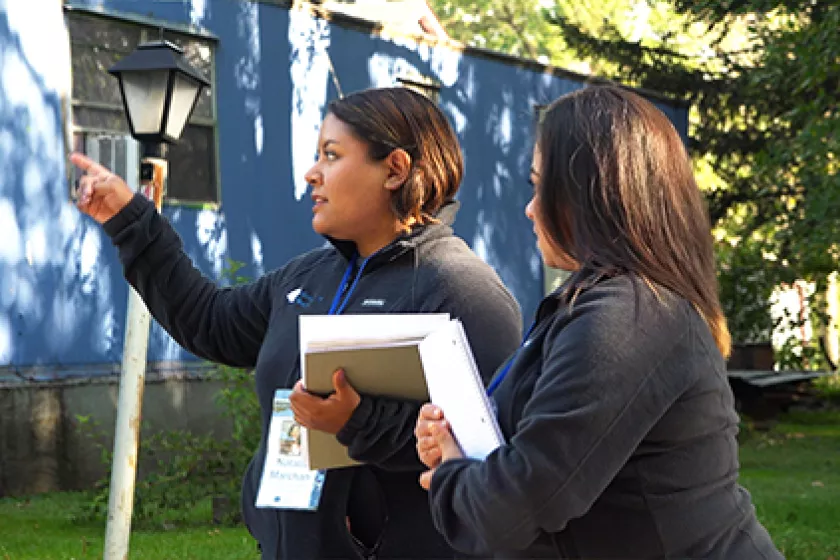
Success Story
ELECTRONICS
TIP: Unplug electronics when not in use
Use a power strip to turn off multiple electronics at once, or use a smart plug to schedule when devices turn on and off automatically.
Lights
Turn off lights when you are not in the room or when you can use natural light.
Replace incandescent bulbs and CFLs with LEDs.
Appliances
Make a plan for when you should replace appliances and equipment.
Appliances lifetimes vary based on how they're used, if they're serviced, and many other factors. The best way to prepare for purchasing energy-efficient models is to know a little about your current appliances. If you make a plan for upgrades before something breaks down, you can take advantage of incentives from your local utility and other programs. Log the appliances in your home below and make a plan.
Appliance Upgrade Plan
| Appliance | Date of installation | Last serviced | Average lifespan | ENERGY STAR? | When to replace |
| Space heating |
Boiler 10-30 years Furnace 15-20 years |
||||
| Air conditioning | 15-20 years |
|
|||
| Water heater | 8-12 years |
|
|||
| Range/oven | 13-20 years |
|
|||
| Refrigerator | 14 years |
|
|||
| Dishwasher | 10 years |
|
|||
| Washing machine | 10-13 years |
|
|||
| Dryer | 10-13 years |
|
|||
| Other: |
|
Kitchen Appliances
Refrigeration
- Move refrigerators and freezers away from heat sources.
- Identify leaky refrigerator and freezer doors: close the door on a piece of paper, and if it is easily pulled out, replace the seal or gasket.
- Check that refrigerator cooling coils are clean.
- Defrost the inside of your freezer or refrigerator.
- Use the power saver feature on refrigerators, if available.
Cooking
- Cook with your microwave or crockpot to avoid overly heating your space.
- Consider an induction range or cook top. They're more efficient than gas or traditional electric stoves.
Community Energy Ambassadors advance clean energy projects within their communities.
As a Community Energy Ambassador you gain access to the knowledge and skills needed to help others meaningfully participate in the clean energy transition. You support communities in their efforts to start clean energy projects with relevant resources and connections. As community members engage in energy decision making, their voices are well-informed and centered in the priorities of their community.
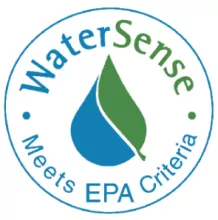
Water heating
- Turn down the thermostat on your water heater to 120°F to reduce energy use and prevent burns.
- Wash your clothes with cold water (and don't forget to clean the dryer lint trap before or after every load).
- Reduce water heating costs with water-efficient faucet aerators and showerheads. Look for the WaterSense label.
ENERGY BILLS
Who supplies the energy to your home?
Find your utility and find out if they provide energy assessments, rebates, or free energy-saving items. It may be important to know how to contact them in case of emergencies.
Your electric and natural gas bills have several types of charges. Actual energy costs and items on bills can be different depending on your utility, but here are the basics:
Energy Charge
The energy charge on your bill is the cost of the electricity or gas you used.
It is billed by kilowatt-hour (kWh) for electricity and therms for natural gas.
Your utility reads your meter to determine the amount of electricity or natural gas used.
Understanding kW and kWh
Kilowatts (kW) are a rate of energy use; kilowatt-hours (kWh) are a quantity of energy used.
For example, a microwave might use electricity at a rate of 1 kW. If the microwave is used for 2 hours, it will use 2 kWh of electricity.
Understanding therms
Therms are a unit of heat.
One therm is equal to approximately 29 kWh and can be provided by about 97 cubic feet of natural gas.
Service Charge
The service charge is a flat monthly fee that you pay every month to have access to energy.
Even if you do not use any energy in a given month, you will still be charged for access under the service charge.
Riders
Many utilities also include “riders” on your bill. Riders are charges for specific aspects of your utility service, such as the cost of fuel.
Riders may be based on how much energy you use or they may be a flat monthly fee.
Taxes
Taxes on your bill vary based on where you live.
Taxes may be flat fees or variable.
If your utilities are shut off or you are behind on payments
CONTACT YOUR UTILITY
Minnesota’s Cold Weather Rule (CWR) is a state law that protects you from having your electric or natural gas service shut off between October 1 and April 30. If you are behind on your bill payments, contact your utility company to find out if you qualify for CWR protection, and sign up. You must set up a payment plan and keep it or you may be disconnected.
All natural gas and electric utilities must offer CWR protection to residential customers. You can set up a CWR payment plan any time during the CWR season. The utility must set up a payment plan that is reasonable for your household circumstances. If you and your utility can’t agree on a payment plan, contact the Minnesota Public Utilities Commission at 800-657-3782, or email consumer.puc@state.mn.us and they can help you work with your utility.
You can also contact your local Energy Assistance Program to help with energy bills.
Find out if you qualify for the Low Income Home Energy Assistance Program. If your income is too high to qualify, you should still work with your utility to establish a payment plan.
READY TO SAVE EVEN MORE?
Contact your utility
Your utility may provide home energy audits, free energy-saving items, or rebates for appliance upgrades.
Energy Assistance and Weatherization Assistance Programs
If eligible for these programs you can get help with your energy expenses and may receive free home energy upgrades.
Pay for Your Projects
Explore different incentives available to help you pay for energy efficiency and clean energy upgrades. From new appliances to weatherization measures, there are tax credits and rebates for you to consider.
BONUS POINTS
RELATED TOOLS AND GUIDES
MN Home Energy Guide
The Home Energy Guide from the Minnesota Department of Commerce provides steps to achieve energy efficiency and shows how reducing energy use will lower your energy bills, make your homes safer and healthier, and contribute positively to the environment.

Read about energy efficiency projects and ideas for residents across Minnesota

